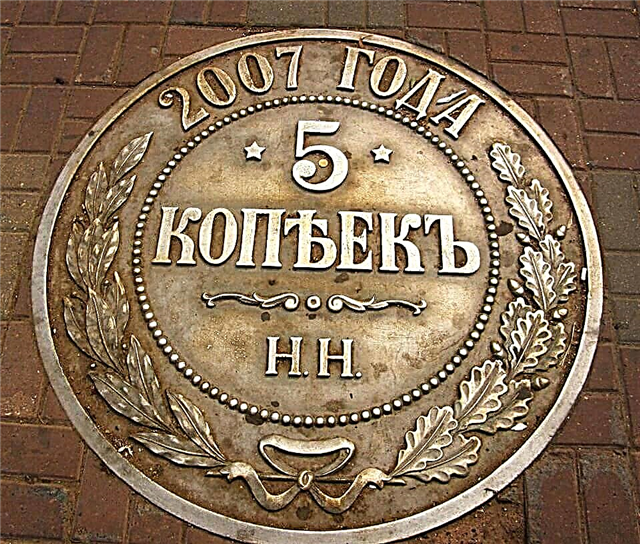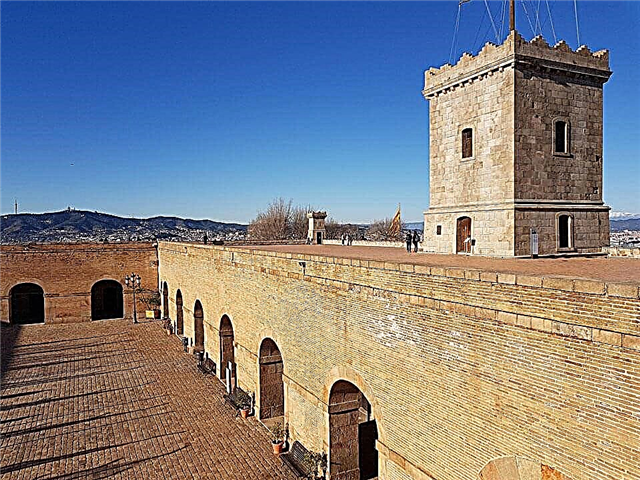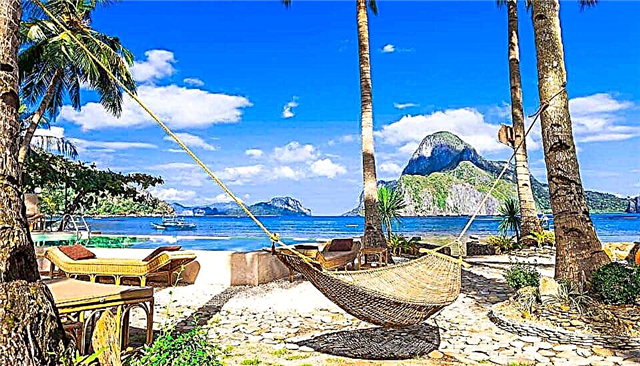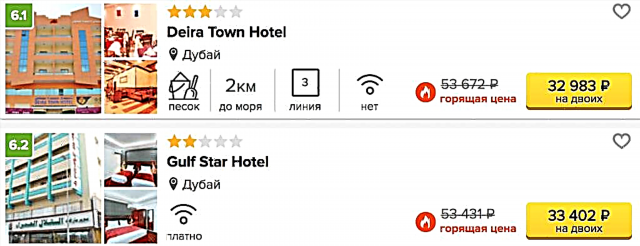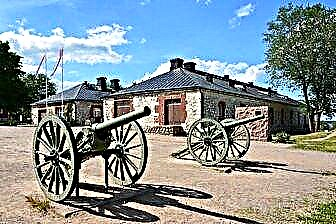Cozy Finnish town, small, but loved by tourists. There are especially many Russians here, the city is located only 60 km from the border with Russia. Lappeenranta's history dates back to the 17th century. Its most important historical site is the defensive fortress, founded by the founders of the city - the Swedes at the beginning of the 18th century. Today it has been restored and turned into a popular tourist attraction.
On its territory there are museums, ancient temples, craft workshops. And from the ramparts, a panorama of the picturesque Lake Saimaa, the largest in the country, opens. The Saimaa Canal, built in the 19th century, is an important waterway connecting the lake with the Gulf of Finland. Water cruises on motor ships, as well as yacht and kayak trips on the lake and canal are popular.

The best hotels and hotels at affordable prices.
from 500 rubles / day
What to see and where to go in Lappeenranta?
The most interesting and beautiful places for walking. Photos and a short description.
Lappeenranta Fortress
The construction of a powerful defensive structure was started by the Swedes in 1721. As a result of military battles with Russia, most of the buildings were destroyed, and subsequently they were rebuilt and expanded by the Russian military under the leadership of A. Suvorov. Currently, all the fortifications have been restored. They house museums, workshops, art galleries, restaurants and souvenir shops. In the summertime, dragoon patrols in ceremonial uniforms go around the territory of the fortress.

Saimaa Canal
The construction of a navigable route from Lake Saimaa through Vyborg to the Gulf of Finland was carried out in 1845-1856. Its length is 43 km, width is 34-55 meters. The height difference between the canal and the Gulf of Finland is regulated by 8 locks, 5 of which are on the Russian side. 12 road and 2 railway bridges were built across the canal. During the war, the canal was destroyed, and the reopening of the main line took place in 1968. Water cruises to Vyborg and St. Petersburg are popular.

Church of the Intercession of the Most Holy Theotokos
Located on the territory of the fortress. It was erected in 1744 as a garrison church at the expense of the soldiers of the Vladimir regiment. After 40 years, the wooden building was replaced by a stone one. The Orthodox Church was often visited by the commander A. Suvorov, Russian emperors. The iconostasis with ancient icons and church utensils of the 18th century - crosses, silver vessels, liturgical books - have survived to this day. The temple is active, open for visits in the summer.

Lappeenranta Church
It was originally conceived as a garrison Orthodox church for the Russian military. Construction work began in 1913. But after Finland gained independence, the church building passed into the subordination of the Lutheran community, was rebuilt and consecrated in 1924. Today it is the main temple of Lappeenranta. It is a massive red brick structure with five domes. It is located in the city center, on a small hill known as the Nikolaevsky Redoubt.

Church of the Virgin Mary
It is called the "Church of the Double Cross" because of its layout. It was erected from wood in 1794. An octagonal tower with a weather vane rises in the center of the building. The interior is designed in calm gray-blue tones; the hall is designed for 870 parishioners. The main decoration is an old crystal chandelier made in St. Petersburg. There is an organ, the façade of which has been preserved since 1891. The four-storey church bell tower was built 50 years later and is located at some distance from the main building.

Lauritsala Church
Located 4 km from the city center. A working Lutheran temple. It was built in 1969. It is a modernist structure in the form of an upwardly directed triangular structure. This form symbolizes the Holy Trinity. The height of the church is 47 m, made of concrete and glass. The interior is decorated with wood, a boat hangs from the ceiling with the word "truth" in Finnish. The seats in the hall are designed for 670 parishioners. There is a 31-register body.

Old town hall
The wooden building was erected in 1829. Subsequently, it was repeatedly completed. It acquired its present appearance in 1891 - by the arrival of the Russian emperor, a music hall, a dining room, good American furniture and lamps appeared in the town hall. The old clock on the tower served until 1973 and was replaced by an electric one. The city administration was housed in the building until 1983, since then its halls have been used for conferences and celebrations.

South Karelia Museum
Located on the territory of the fortress, in the premises of the former artillery warehouses. It was created in 1963. The expositions are dedicated to the history and cultural traditions of Lappeenranta and the entire South Karelian region, including the cities of Vyborg and Priozersk. The pride of the museum is a large model of the pre-war Vyborg 1939, covering an area of 24 m2... Children's rooms are equipped for young visitors. There is a gift shop. Two cannons from 1877 are installed on the site in front of the museum.

Art Museum
The funds of this museum contain numerous works of art by Finnish masters, dating back to the 18th century. A special place is given to contemporary art forms in the southeastern part of Finland. Paintings and graphics of young novice authors are presented. There is an interesting collection of wooden sculptures. The expositions are updated several times a year. Off-site exhibitions are practiced. The museum was opened in 1965 and is located on the territory of the fortress, in the premises of the artillery barracks.

House-Museum of the merchant Ivan Volkov
Construction began in 1823. It is the oldest wooden building in the city. The merchant Volkov, a former serf from Yaroslavl, and his descendants lived here from 1872 to 1983. Subsequently, the house was donated to the city and after 10 years it turned into a museum. Furniture and household items have been preserved, and a number of rooms of the merchant's house have been recreated - a bedroom, a nursery, a dining room, a study. Nearby is the Volkoff restaurant and a bakery where Russian bread is baked according to old recipes.

Cavalry museum
Located in the guardhouse of the fortress, built in 1772. The exhibits of the museum are associated with the military events of 1618-1648, during which the Finnish cavalrymen, the Hakkapeliites, who fought in the ranks of the Swedish army, became famous for the first time. War prints and paintings, rare weapons, uniforms, harness and horse care items, photographs are presented. A separate exhibition is dedicated to the Finnish dragoon regiment, which was stationed on the territory of Lappeenranta in the 19th century.

Saimaa Canal Museum
It has been open to visitors since 1995. The exhibitions are dedicated to the history of the construction of an important transport route and the main stages of its development. Among the exhibits are models of ships and locks, tools and uniforms of employees, reconstruction of the chief's office, photographs and documents. One of the halls displays a large-scale map with marked routes through which the canal is laid. A shop and a cafe are open at the museum. Water cruises are offered.

Aviation Museum of Karelia
The opening took place in 2000. The expositions are located in two hangars and in the open area of the Lappeenranta airfield. The main exhibits include helicopters and 9 aircraft made in the USSR, Sweden, France, and Great Britain. Also on display are the wreckage of downed aircraft from the Second World War, pilots' suits, personal belongings, documents and photographs. The museum accepts visitors only in summer. There is a small gift shop.

Monument to the Saimaa seal
The endemic inhabitant of Lake Saimaa received a monument in his honor on the Kauppakatu pedestrian street in the city center. The sculptor M. Pääläinen depicted a seal resting in the sun on a stone pedestal, surrounded by a small reservoir. The monument was erected in 1997. The Finns are very careful about these animals - endangered representatives of the ringed seal subspecies living in fresh water. Their number today is only 310 individuals.

Sand sculpture festival
Since 2004, it has been held every summer on the embankment of the lake. Sculptors from different countries are involved in the construction of the sand town. The theme of the festival is different every year - animals, fairy-tale and mythological characters, movies and cartoons, music. To create masterpieces, at least 3 tons of sand are required. All figures are covered on top with an aqueous solution with the addition of glue. Such a shell is able to protect them from rain and wind. You can admire the sculptures throughout the summer.


